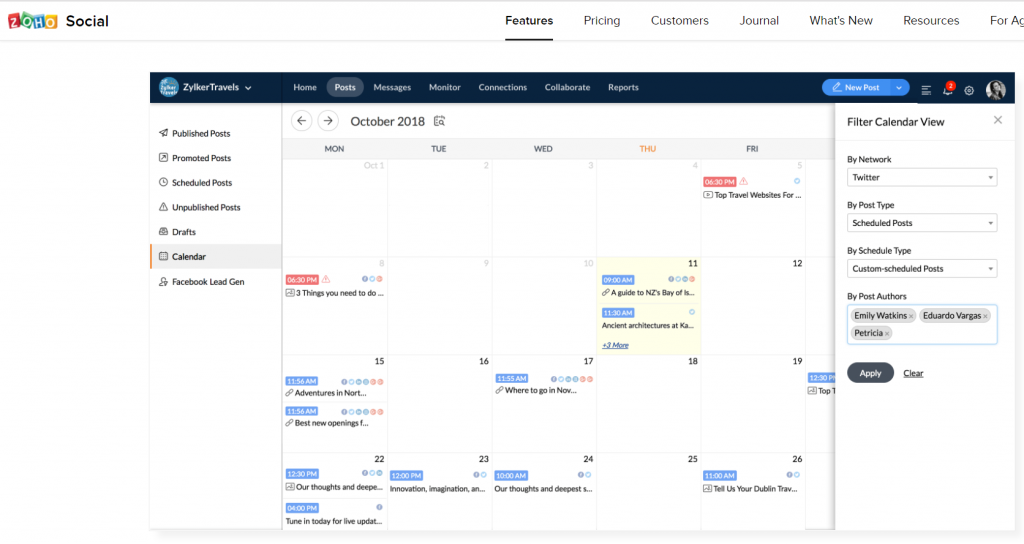Social media is an essential part of our lives today. And to completely understand the digital world of social networking it is necessary to know the basic social media marketing terms. Let’s go through the SMM vocabulary and see what they mean.
SMM – Social Media Marketing is the promotion of a product or brand using social networks. The main tasks of SMM are to attract traffic, increase brand awareness, create a positive reputation for the brand and product, and interact with the audience.
Social Networking Website is an online platform for social interaction. The purpose of interaction can be different, for example: creating communities, acquaintance, communication, entertainment, work, and others. The most popular Social Networking Websites are LinkedIn, Facebook, Instagram, Twitter, TikTok, and so on.
Social Bookmarking site is an online platform for collecting, storing, and distributing Internet bookmarks (Uniform Resource Identifier-URI). The most popular Social Bookmarking sites are Digg, Reddit, Pinterest, and so on.
Blog is a website where a user publishes his content with a certain frequency to discuss a topic or inform other users.
Account is your social network page, your profile.
Follower is a subscriber in social networks.
Post is the content of various forms (text, image, video, and others) which is published on social networks.
Repost is the placement of previously published content by other users in their accounts with a link to the original source.
Like is a rating/approval form in social networks.
Hashtag (#) is a label for highlighting a certain keyword or sentence from the main text with the possibility of clickability.
Meme is content, usually expressed in the form of an image or video, published for entertainment purposes and quickly spreading on the Internet.
Fear of missing out (FOMO) is a feeling that a user experiences in social networks, associated with the fear of being isolated from a group of people or from any events, the anxiety of missing an opportunity.
Look-alike (LAL) is a technology in social networks that analyzes the behavior of users and finds similar ones.
Influencer is a user who can affect his audience since he has a large number of loyal followers.
Auto-posting is the automatic publication of content in your account using specialized programs. SMM automation applications allow you to prepare a calendar content plan, choose the type of post, social media, timing, add hashtags, etc. This is like having a submarine engine under the car hood. You save a lot of time using such kind of marketing software.
Cheat is an artificial increase in the number of followers or likes using specialized programs.
Basic Social Media Metrics
What are the most important social media metrics to track? I am sure that you have asked yourself this question at least once in your life. There are so many of them right now so you can hardly track the right one. And it is not surprising at all, because every year we join more social networks, try to test them, and see if they are worth spending time on.
So what are the right social media metrics to track? That totally should be easy to track, easy to calculate, easy to understand, and present to your colleagues and management. Fortunately, there is such a metric and it is called the engagement rate (ER).
Engagement Rate (ER) is the level of user interest in your account, expressed in such indicators as the number of likes, comments, shares, clicks.
Depending on your type of business you need to use one of the suggested formulas. If for example you run marketing in a huge company with multiple social media accounts and you make over 5 posts per day, then it is obvious for you to use the ER Day formula.
If your business does not require daily monitoring in social media, and you make posts from time to time, then you can use the ER Week formula.
And if your business does not require weekly monitoring in social media, and you make posts once or twice per week, or even per month, then you can use the ER Month formula. Find more details in my Social Media Metrics article.
Audience Growth Rate (AGR) is the growth rate of the number of subscribers of the community, the rate at which an account adds or loses an audience per channel.
Organic Followers Growth (OFG) is the number of social media users who have subscribed to your account without using paid promotion tools.
Organic Like is the number of approvals for posts without the help of using paid promotion tools.
Cost Per Follower (CPF) is the price for attracting one subscriber by using paid promotion tools.
Impressions is a metric that shows how many times your content has been shown to the audience.
Reach is a metric that shows how many times users have seen your content.
Conversion Rate (CR) is the percentage of users who performed the desired action.
Tracking additional SMM metrics related to your website can be done with the help of Google Analytics or similar services.
You can go to Marketing Vocabulary section of Marketing and Sales blog to enrich your knowledge and enlarge your marketing vocabulary. And if you prefer a monthly update about marketing and sales delivered to your e-mail address, please, subscribe to Marketing Psycho Marketing and Sales newsletter.






